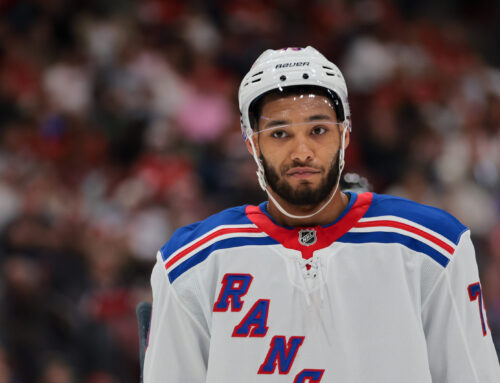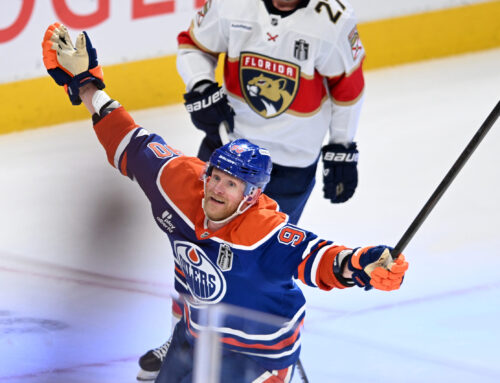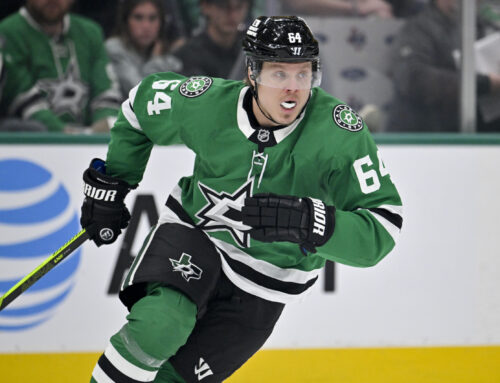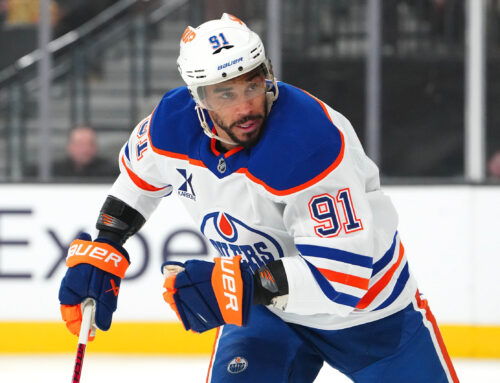During the last couple of weeks, I've been taking a bit of a dive into players who have seen their shot rates decrease over the last few seasons (see the columns here and here).
All of these players were either in a trend — or close to it — of declining shot rates, so fantasy general managers should have some level of concern. Of course, it's not all bad. There are plenty of players who have seen numerous increases in shot rates.
The reason why I look at shot rates instead of shots is because shot rate gives a more accurate picture when figuring out if a player is taking more or fewer shots. Injuries or suspensions can make it seem like a player had a decrease in shots when the opposite may have been true.
Below are 10 players who have seen their shot rates rise in each of the past few seasons, and significantly overall. Most of the players on this list should continue to see their shot rates rise next year, so they should be a target when your draft rolls around (whenever that might be).
10. Blake Coleman
Coleman is one of those players where you pretty much know his shot rate is going to decrease next year, although it's not his fault. When he was in New Jersey, that shot rate went from 1.26 to 1.85 to 2.73 to 3.19. That's a tremendous uptick each season. Then he was traded to Tampa, and his ice time dropped by more than two minutes per game and his shot rate dropped to 2.0 in nine games. If he's still with the Lightning next season (and he should be, considering he is making only $1.8 million next year, which is excellent value for a team tight to the cap), then he simply won't get the ice time needed to get much more than two shots per game.
It would be fair to say that Mantha's career for fantasy relevance has been a little underwhelming so far. Although his points-per-game mark has been improving, he's topped out at 48 points thanks to injuries. However, there are plenty of things to like about his game, and he will be a consistent 30-goal scorer if he can stay healthy. His shot rate has risen every season and is currently at 3.19 shots per game, almost a shot per game higher than it was in 2016-17. If he can score on 12 per cent of his shots (slightly under his career average) with the same shot rate, you have a 30-goal scorer over 82 games.
8. Jakub Vrana
Vrana was one of the surprises of this past season. He had already hit career highs in goals, points, shots and power play-play points when the season was suspended, and was on pace for 30 goals, 62 points, 222 shots and 14 power-play points. While his shot rate has gone up each season, it skyrocketed from 1.96 shots per game last season to 2.71 this year.
It was a little surprising to me that Debrincat is on this list, as I assumed he put up worse numbers across the board. This season, he had a 53-point pace over an 82-game season and had just 18 goals total when the league was shut down for COVID-19 back in March. He topped my lists for top 10 disappointing young players and top 10 forwards with deflated shooting percentage. However, despite his struggles this season, Debrincat's shot rate increased. He's gone from 2.21 per game in his rookie campaign to 2.68 last year to 2.96 this season. If his shot rate increases just slightly to 3, and his shooting percentage jumps back to 15 per cent (he's normally in the high teens), you're looking at a 37-goal season next year.
Theodore was one of five defensemen to reach three shots per game this season, and he has seen a shot rate increase in every season of his career, going from 1.76 in 2016-17 to 3.08 this past season. I expect to see another increase next year. He's getting more ice time, and he's also the sole power-play quarterback on the team (in previous years, he was splitting power-play duties with Brad Hunt and Colin Miller). Last season, for example, he was on the ice for 49.7 per cent of all of Vegas' minutes. This year, that jumped up to 70.6 per cent.
5. Kyle Connor
When people talk about potential 50-goal scorers, we always hear about Auston Matthews, David Pastrank, Patrik Laine, etc. However, I feel like Kyle Connor is often a forgotten man in that discussion. I'm optimistic that he could only day reach that 50-goal mark for several reasons. The first is his shot rate, which has gone up significantly in the last few years. He was up 0.6 shots per game this season from a year ago and is now at almost 3.5 shots per game. More importantly, he scores on a high percentage of his shots. Being a fixture on the top power play also helps.
It may fly under the radar, but Gallagher is a beast in leagues that count shots. This season, Gallagher averaged 3.83 shots per game, seventh-highest in the league. Four seasons ago, Gallagher was averaging 2.92 shots per game. He's amazingly effective, considering he gets all those shots in fewer than 17 minutes per game while playing less than half of Montreal's power-play minutes. Patric Hornqvist is the only other player to average more than 3.2 shots per game while playing fewer than 17 minutes.
Two weeks ago, Crosby was number one for players in a trend of shot rate decreases. Maybe it's because players such as Guentzel are hogging all the shots. In his rookie campaign in 2016-17, Guentzel averaged 2.03 shots per game. That went up slightly to 2.09 before skyrocketing to 2.77 last year and then 3.26 this season (albeit in only 39 games). There are plenty of reasons behind this increase. His power-play and overall ice time have significantly increased. He's playing with much better linemates. Like Connor, Guentzel's shooting percentage has almost always been high, so if his shot rate continues to rise, we should see a few 50-goal seasons out of him.
The soon-to-be Hart trophy winner had an excellent season, and if the campaign wasn't suspended, he would have been the first player since Mario Lemieux in 1995-96 to scored 50 goals and 125 points in the same season. Draisaitl's shot rate has increased in every season, from 1.32 as a rookie to 1.85 as a sophomore and so on to 3.07 this year. With such a high shooting rate (he scored on 19.7 per cent of his shots this year and 21.6 last year), I wonder if he could hit 60 or even 70 goals if he can get to four shots per game.
MacKinnon has led the league in shots for the past two seasons, but his increase ins still impressive. Don't forget that in 2016-17 (and the years preceding that season), he was scoring 16 goals with a 6.4 shooting percentage, and fantasy general managers were labeling him a bust. He averaged 3.06 shots per game that season. In the next three seasons, that jumped to 3.84 to 4.45 to 4.61 this year, so he's taking a shot and a half more per game than he did a few years back. Now, his shooting percentage hovering around 11 per cent, and with the increase in shots, he's scoring around 40 goals.





 CHI
CHI SEA
SEA FLA
FLA DAL
DAL WPG
WPG CBJ
CBJ L.A
L.A DET
DET VAN
VAN ANA
ANA COL
COL
